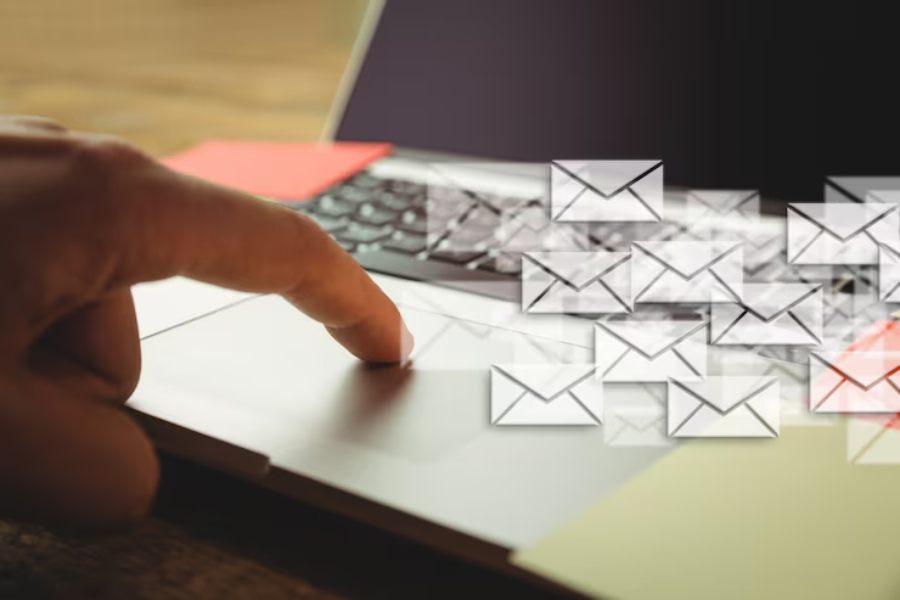Are Hyphens Allowed in Email Addresses? Best Practices and Rules

Email addresses are a critical part of digital communication, and understanding the rules that govern their structure is essential for both personal and business purposes. One common question that arises is whether hyphens are allowed in email addresses. The short answer is yes, but there are specific rules and best practices to follow when including hyphens in your email address.
While hyphens can be used in the local part (before the “@” symbol), they must be carefully placed, as improper use can cause confusion or even prevent the email address from functioning correctly. In this article, we will explore whether hyphens are allowed in email addresses, the rules surrounding their use, and tips on how to structure an email address for clarity and usability. Whether you’re creating a professional email address or just curious about the mechanics, this guide will answer all your questions.
Are hyphens allowed in email addresses?
Yes, hyphens are allowed in email addresses, but they can only be used in the local part (before the “@”) and must not be placed at the beginning or end of the address. Additionally, hyphens should not be used consecutively, as this could lead to confusion or errors in some systems. It’s essential to follow these guidelines for your email address to be valid and functional.
The Rules of Using Hyphens in Email Addresses Explained
Hyphens can be used in email addresses, but there are specific rules to follow to ensure the address remains valid. First, hyphens are allowed in the local part of the email address, which is the portion before the “@” symbol. However, they cannot be placed at the beginning or end of the address, as this can cause the email system to treat the address as invalid. For instance, email addresses like “-john-doe@example.com” or “john-doe-@example.com” would not work.
Additionally, consecutive hyphens should be avoided. Using two or more hyphens together, like “john–doe@example.com,” could lead to errors or confusion within email systems, making the address difficult to process.
While hyphens are generally allowed, misusing them can create issues with readability and functionality. An email address with misplaced or consecutive hyphens may result in messages being undelivered or misdirected. To ensure your email address works appropriately, it’s essential to follow the correct structure and avoid adding unnecessary hyphens. This helps keep your email address clean, clear, and functional for easy communication.
How to Properly Use Hyphens in Email Addresses?
When creating an email address, it’s crucial to follow best practices to ensure your address is both functional and easy to read. Proper use of hyphens can enhance the clarity of your email, making it easier for others to remember and type correctly.
Use Hyphens Between Words
Hyphens help separate words within your email address, making it more readable and professional. For example, “john-doe@example.com” is straightforward to interpret. The hyphen helps distinguish the first and last names, making it more accessible and memorable.
Avoid Starting or Ending with a Hyphen
A key rule to follow is never to start or end your email address with a hyphen. This can lead to errors in email systems, often resulting in an invalid address that cannot be used to send or receive emails. Always ensure your address begins and ends with alphanumeric characters.
Don’t Use Consecutive Hyphens
It’s also important to avoid using consecutive hyphens in your email address. This practice can confuse email systems and may cause your address to be rejected. A cleaner structure is always better.
Stick to Simplicity
While hyphens can help separate words, too many can clutter your email address. Keeping your email simple, with minimal hyphen use, ensures that it is easy to read, remember, and share with others.
By following these guidelines, you can create an email address that is both professional and easy to use.
Common Mistakes to Avoid with Hyphens in Email Addresses
Hyphens can be a helpful tool when creating an email address, but some common mistakes can cause issues. These mistakes can lead to errors and prevent your email from functioning correctly. Here are the key mistakes to avoid:
- Starting or Ending with a Hyphen: Never start or end your email address with a hyphen. This is often treated as an invalid address by email systems. For example, an email like “-john-doe@example.com” or “john-doe-@example.com” will likely fail to work.
- Using Consecutive Hyphens: Using consecutive hyphens, such as “john–doe@example.com,” can create confusion and errors in email processing. This practice is generally not supported by most email systems and may result in your email address being rejected.
- Making the Address Too Long or Complex: While hyphens are helpful for clarity, overusing them can make your email address overly lengthy and complex. Long addresses are harder to remember and more prone to typing errors.
By avoiding these mistakes and following the proper structure, you can ensure that your email address is functional and easy to use. This will help prevent issues when others try to email you.
Why Hyphens are Important for Email Address Clarity?
Hyphens serve as a tool for making email addresses more readable and easier to remember. Without hyphens, long strings of letters can become difficult to distinguish, especially for email addresses that include full names or phrases. By using hyphens to separate words, you make your email address more user-friendly and professional.
For instance, “johndoe123@example.com” might be hard to read, while “john-doe123@example.com” is much clearer. This small punctuation mark can make a big difference in clarity, making it easier for people to find and contact you.
Suppose you’re unsure about the best practices for structuring your professional email address. In that case, a consultant like Pedro Paulo Business Consultant can help guide you in choosing a clean, readable address that aligns with your brand.
Best Practices for Choosing an Email Address with Hyphens
If you choose to include hyphens in your email address, it’s essential to follow some best practices to ensure your address remains professional and functional. Here are some key tips:
- Keep It Short and Simple: Avoid adding unnecessary characters or long strings. A concise and easy-to-read email address is always more effective. Keeping your address simple helps prevent confusion and ensures it’s easy to type.
- Use Hyphens Sparingly: You don’t need to overuse hyphens in your email address. Use them only to separate words for clarity. Overuse can make the address more complicated and more challenging to remember.
- Ensure Readability: Readability is key, especially for professional purposes. Your email address should be easy for others to read, understand, and remember. A clean, well-structured address creates a more positive impression.
- Double-Check for Errors: Always test your email address before sharing it widely. This ensures that it works correctly and helps avoid issues with sending or receiving emails.
By following these best practices, you’ll create an email address that is professional, functional, and easy to use.
Deduction
In conclusion, hyphens are allowed in email addresses, but they come with a set of rules to ensure functionality. They can be used in the local part of the email address, but must not be placed at the beginning or end, and should not appear consecutively. Following these best practices ensures your email address remains valid and readable. By using hyphens to separate words effectively and avoiding common mistakes, you can create a professional email address that works seamlessly. Always be mindful of the structure to avoid confusion and ensure that your email address functions as intended.
FAQ’s
Are hyphens allowed in email addresses?
Yes, hyphens are allowed in the local part of an email address, but they should never be placed at the beginning or end. Consecutive hyphens should also be avoided to prevent errors.
Can I use multiple hyphens in my email address?
You can use multiple hyphens in your email address, but they should not be consecutive. It’s best to keep the address simple and easy to read to avoid confusion.
What are the most common mistakes with hyphens in email addresses?
Common mistakes include starting or ending the email with a hyphen, using consecutive hyphens, or creating a long and complex address. These errors can cause issues with email delivery.
Can hyphens help with email address readability?
Yes, hyphens can separate words in your email address, making it easier to read and remember. This is especially helpful for professional addresses or those with multiple words.
What is the best practice for using hyphens in an email address?
Use hyphens sparingly to separate words, avoid consecutive hyphens, and keep the address short, simple, and easy to read for better clarity and usability.
